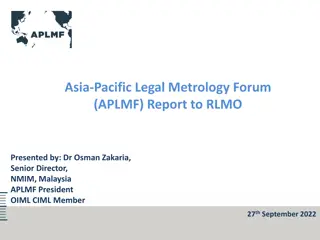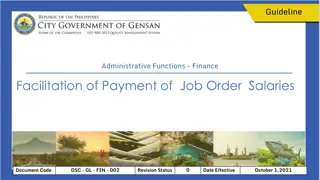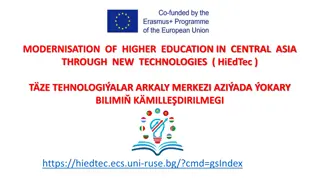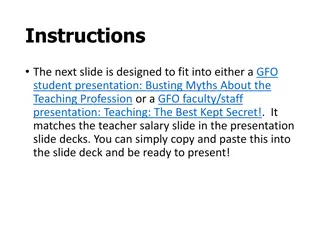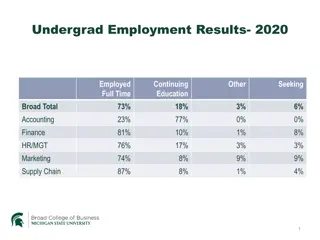Trends in Executive Salaries Across Asia
This content discusses the surge in executive salaries in Asian countries compared to Europe and North America, driven by factors like economic growth, talent scarcity, and market competition. It also explores the shift towards cash-based compensation packages and the implications for businesses in the region.
Download Presentation

Please find below an Image/Link to download the presentation.
The content on the website is provided AS IS for your information and personal use only. It may not be sold, licensed, or shared on other websites without obtaining consent from the author.If you encounter any issues during the download, it is possible that the publisher has removed the file from their server.
You are allowed to download the files provided on this website for personal or commercial use, subject to the condition that they are used lawfully. All files are the property of their respective owners.
The content on the website is provided AS IS for your information and personal use only. It may not be sold, licensed, or shared on other websites without obtaining consent from the author.
E N D
Presentation Transcript
J.AROCKIA SUBITHA ASSISTANT PROFESSOR & HOD DEPARTMENT OF BUSINESS ADMINISTRATION T.D.M.N.S. COLLEGE
CASE STUDY HUMAN RESOURCES COMPENSATION AND BENEFITS Planning to pay Executive-level salaries in Asian countries have sky-rocketed by up to 7% in the past year, compare this to the more modest increases in Europe and North America of 2.5 3% and it is clear that business inAsia is booming. This enormous surge in remuneration can be attributed to continued strong growth in Asia s industrial production and GDP, accelerating inflation across the region, a scarcity of executive talent and difficulty in filling executive positions, as outlined by Mercer s Executive Remuneration Perspective report. While executive salaries in Asia are already higher than in Europe, and with an annual increase rate higher than in the US, Mercer expects Asian executive salaries to surpass those in the US within the next two to three years. A second regional trend is a shortage of executive talent endowed with the ability to innovate, to think globally, to take risks and to move quickly. Such talent is mobile across Asia and, as a result, is driving up pay in some sectors to levels that may prove unsustainable. Yeoh Sai Yew, Head Rewards & People Services, Air Asia, believes that the future of compensation and benefits in Asia s key and emerging markets will lie in simple pay packages consisting of hard cash. Instead of giving additional perks such as housing and a car for instance, it is very likely that more companies will be going for direct cash, says Yeoh. However, some companies will still do some breakdown to reduce individual taxes in certain countries. Yeoh also predicts there will be lesser emphasis on long -term incentive plans (LTIPs) such as retirement gratuity (non-statutory). These LTIPs not only increase administrative and operational costs, but also do not help to retain the new generation. Short- and medium-term incentives will still be popular trends in order to retain talent.
CASE STUDY MARKETING BIG BAZAAR: AN INDIAN RETAIL CHAIN'S CUSTOMER LOYALTY INITIATIVES This case is about the customer loyalty initiatives at Big Bazaar, one of the largest retail chains in India. To maintain a loyal customer base, Big Bazaar came out with several promotional and loyalty programs which offered special discounts and rewards to customers. The hypermarket chain offered a host of value- added services to its customers and set a new level of standard in price, quality, convenience, and service. The case provides an overview of the different customer loyalty initiatives launched by Big Bazaar and their features. It also discusses the different loyalty cards introduced by Big Bazaar in association with ICICI Bank. The case concludes with a question on whether customer loyalty programs affect the purchase decision of customers and the challenges that Big Bazaar has to face in maintaining and extending customer loyalty at a time when the Indian consumer is spoilt for choices. Issues: Understand the importance of customer loyalty, particularly in the retail industry. Study the different customer loyalty programs initiated by Big Bazaar. Understand the role of co-branded credits cards in customer loyalty programs Understand the concept of customer relationship management Explore strategies that Big Bazaar can adopt in the future to increase customer loyalty
CASE STUDY - SYSTEMS CYBER SQUATTING In 2009, Internet software company Google Inc. won a cyber squatting case against an Indian teenager who had registered a domain name googblog.com. The domain name, Google contended, was confusingly similar to its trademark. Experts felt that complaints regarding cyber squatting was on the rise and organizations such as the World Intellectual Property Organization (WIPO) were being approached by trademark holders to resolve such disputes. Introduction On May 15, 2009, the World Intellectual Property Organization (WIPO) ordered an Indian teenager, Herit Shah (Shah), who had been using the domain name 'googblog.com', to transfer the rights of the domain to Google Inc. (Google). Industry observers viewed this as a case of cyber squatting, and said that Google had been able to successfully defend its intellectual property rights (IPR). According to WIPO, there had been a rise in allegations of cyber squatting by trademark holders in 2008. Cyber squatting was the practice of "deliberate bad faith registration as domain of well- known trademarks in the hope of being able to sell the domain to the owners of those marks (or rivals' owners) or simply to take unfair advantage of the reputation attached to those marks" . Experts believed that cyber squatting was one of the most debatable issues in the field of cyber law. In countries like India, where there was an absence of relevant cyber laws to prevent this practice, such cases were decided within the ambit of trademark laws. WIPO's Arbitration and Mediation Center was in the process of developing an online Internet-based system for administering commercial disputes involving intellectual property...
CASE STUDY PRODUCTION SCIENTIFIC RESEARCH CORPORATION A professor in management from one of the leading institutes of management was invited to lead a seminar for the top 50 managers of Scientific Research Corporation (SRC). This seminar was of great significance because the SRC was spending about Rs. 5.5 crores per year on its space programmes. In the course of the seminar, when professor was warming to his subject and giving a discourse on how important management theory was and the various techniques for improving the quality of management, a distinguished looking gentleman (who was unknown to the speaker but was a leading scientist at the SRC) rose from his seat and said : "Sir, we are very interested in your discourse which verily has a great deal of intellectual content in it. But, for your benefit and for the benefit of all of us gathered here, I would like to say that, while management may apply to Hindustan Lever, Delhi Cloth Mills, Associated Cements, and even to our government agencies like the Indian Revenue Service, it does not apply here. We are scientists and researchers, and we do not need or want management". The professor was understandably quite taken aback by this and proceeded to illustrate why scientists also needed management. Questions Suppose that you were the professor leading the seminar, what would you have said at this point? Can you explain why such an intelligent top scientist would have made such a statement?
CASE STUDY INVENTORY MANAGEMENT INVENTORY MANAGEMENT THROUGH ABC ANALYSIS Super Sounds, Inc. (Super Sounds) is a leading speciality retailer founded more than 60 years ago in Cleveland, Ohio. The store provides a vast array of items to inspire accessories of all kinds. The company aims to meet its customers needs not only with its products but also with the services and advice to help with their needs. Thus, customer service is an essential element of Super Sounds successful retail model. The shop is in a storefront location on a busy street and it has limited storage space for inventory. Recently, as demand for its few products has increased, management has had difficulty in managing the inventory. They frequently run out of some crucial products but seem to have endless supply of others. Hence the management of Super Sounds understood the value of managing inventory to satisfy customers and to bring down inventory costs. Obviously, having excess inventory will have huge inventory costs. To reduce costs in an inventory system, the focus should be on certain important high valued items. In this context, a management trainee provided a solution to the problem, by suggesting ABC analysis for their needs. This ABC classification process helped manage the inventory properly. The implementation of the ABC Analysis became a key element of supply chain and inventory management across Super Sounds stores. Objectives: To understand the basics of inventory management To discuss how ABC analysis is used in managing inventory.







